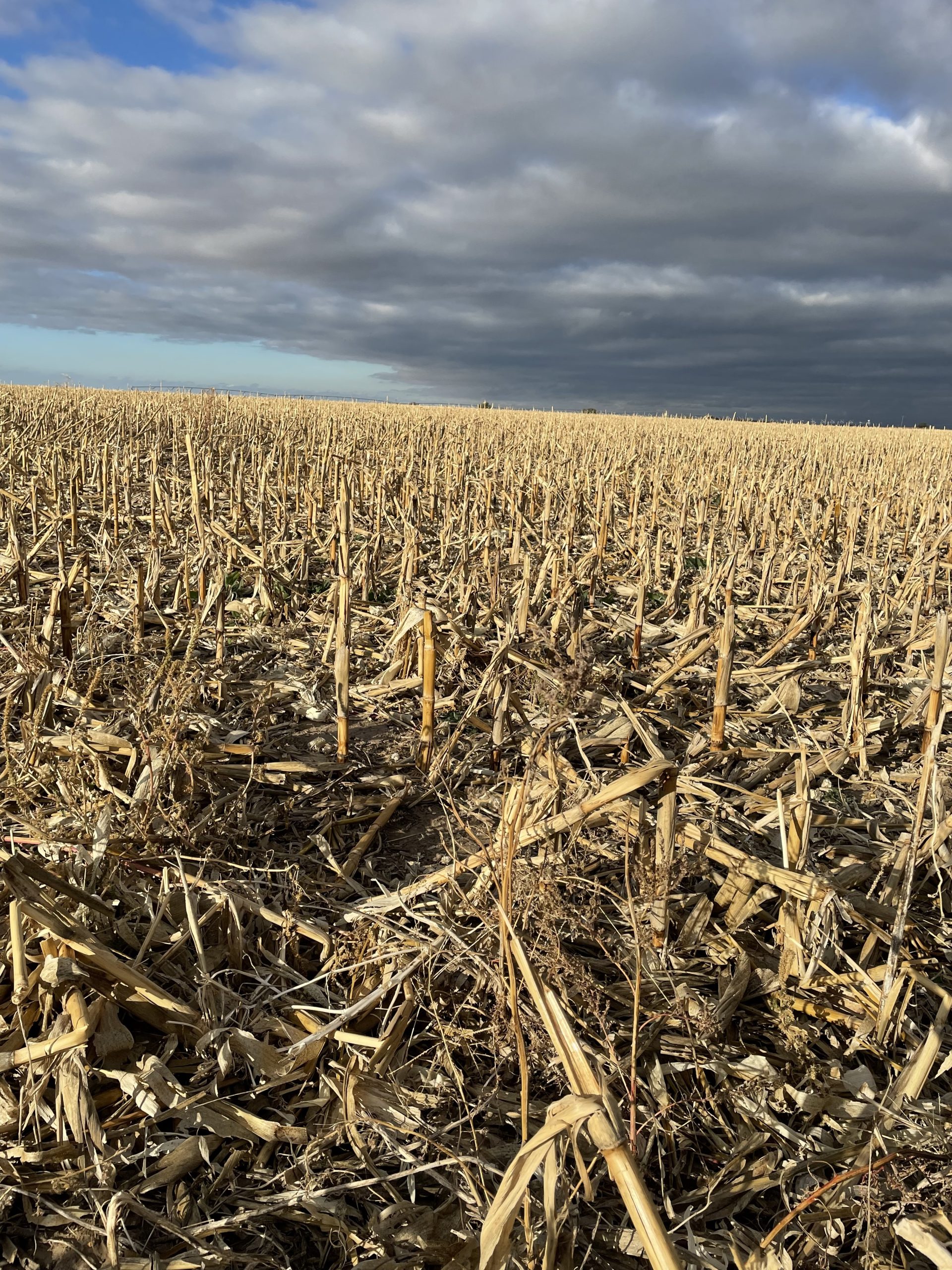Cattle turned out to graze various kinds of crop residue fields are a common sight when travelling around the northeastern corner of Colorado these days, a testament to the benefit of grazing for both the farmer and the beef cattle producer. This practice can be a good way for a farmer to diversify their operation as well as add value to the residue left on the field. Another addition to the pro column for the farmer is the natural addition of nutrients and organic matter to the soil from the manure left behind and, if done properly, incorporated into the soil for you by the animal’s hooves. One concern that should be on the farmer’s radar with residue grazing is weed management in grazed fields. However, if managed correctly, the spread of weeds can be easily mitigated.
When cattle are first brought to the field there is a risk of them bringing weed seeds with them, mostly in their digestive tract. Although the ruminant digestive system of the cow might harm the viability of some seeds, we cannot depend on it to kill all of the weed seeds before they hit the ground. According to the University of Nebraska-Lincoln, grass and soft-coated broadleaf seeds are more easily destroyed by digestion than hard coated seeds—which includes problematic pigweed varieties. Another way weed seeds may be brought into the field is through hay from an outside source. The seeds can enter the field directly from supplemental feeding, or again, through the digestive tract of the animal after it has consumed that hay.
Mitigation strategies to keep these weed seeds from becoming a problem next growing season include early field scouting and selective feed placement. When supplemental feed is needed the farmer should choose an isolated area of the field for the feed to be laid out every time. This area should be in a place that is easily accessible for scouting and spraying in the early spring. This should keep weed seeds that are coming directly from the feed in one small area of the field, which should allow management strategies to remain on a smaller scale.
As always, keeping notes whether mental or physical from this grazing season as well as early spring when we start to see those cool season weeds will help producers make any adjustments to management systems or remind them what worked well to stay the same.




